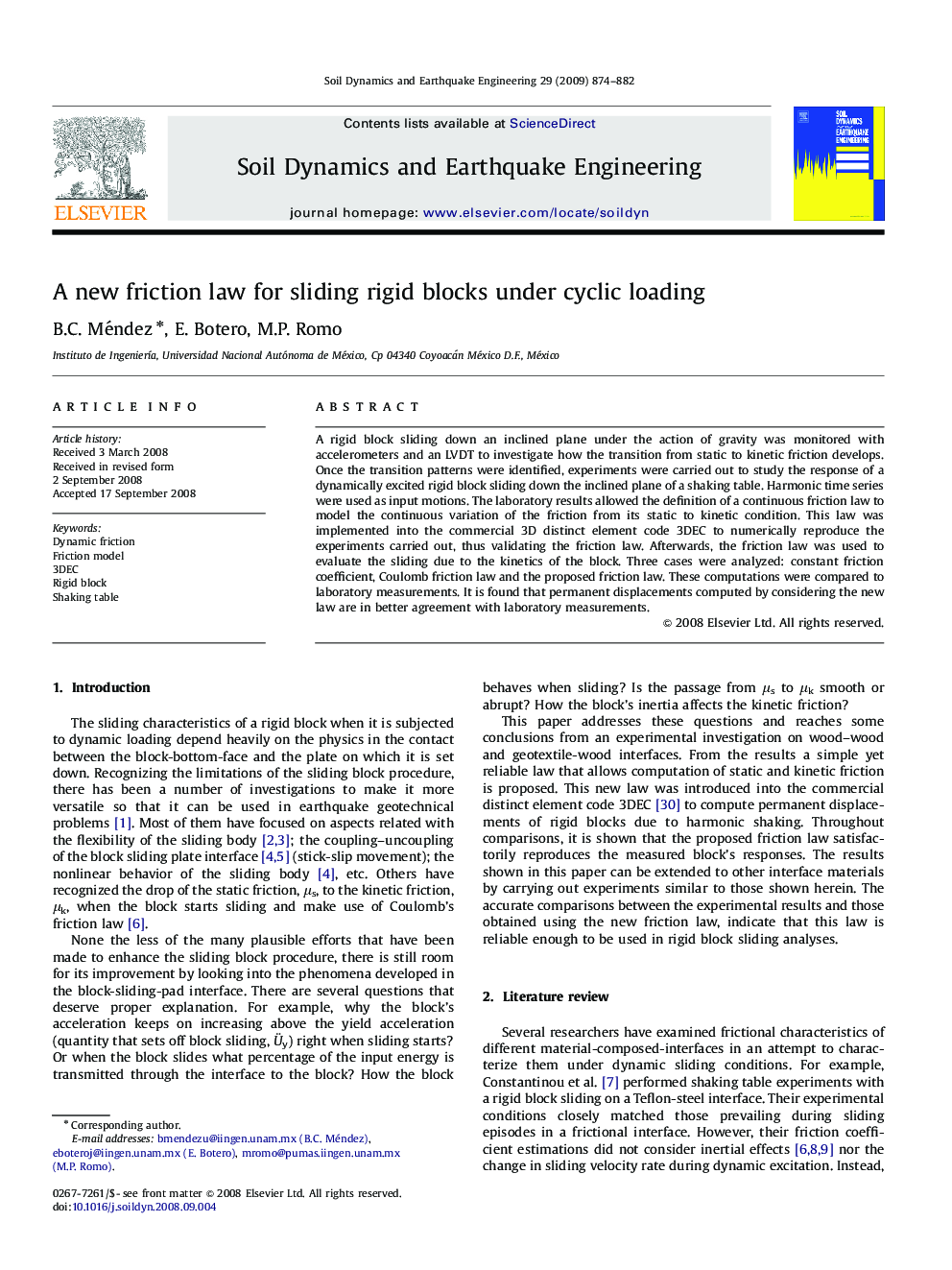| Article ID | Journal | Published Year | Pages | File Type |
|---|---|---|---|---|
| 305001 | Soil Dynamics and Earthquake Engineering | 2009 | 9 Pages |
A rigid block sliding down an inclined plane under the action of gravity was monitored with accelerometers and an LVDT to investigate how the transition from static to kinetic friction develops. Once the transition patterns were identified, experiments were carried out to study the response of a dynamically excited rigid block sliding down the inclined plane of a shaking table. Harmonic time series were used as input motions. The laboratory results allowed the definition of a continuous friction law to model the continuous variation of the friction from its static to kinetic condition. This law was implemented into the commercial 3D distinct element code 3DEC to numerically reproduce the experiments carried out, thus validating the friction law. Afterwards, the friction law was used to evaluate the sliding due to the kinetics of the block. Three cases were analyzed: constant friction coefficient, Coulomb friction law and the proposed friction law. These computations were compared to laboratory measurements. It is found that permanent displacements computed by considering the new law are in better agreement with laboratory measurements.
